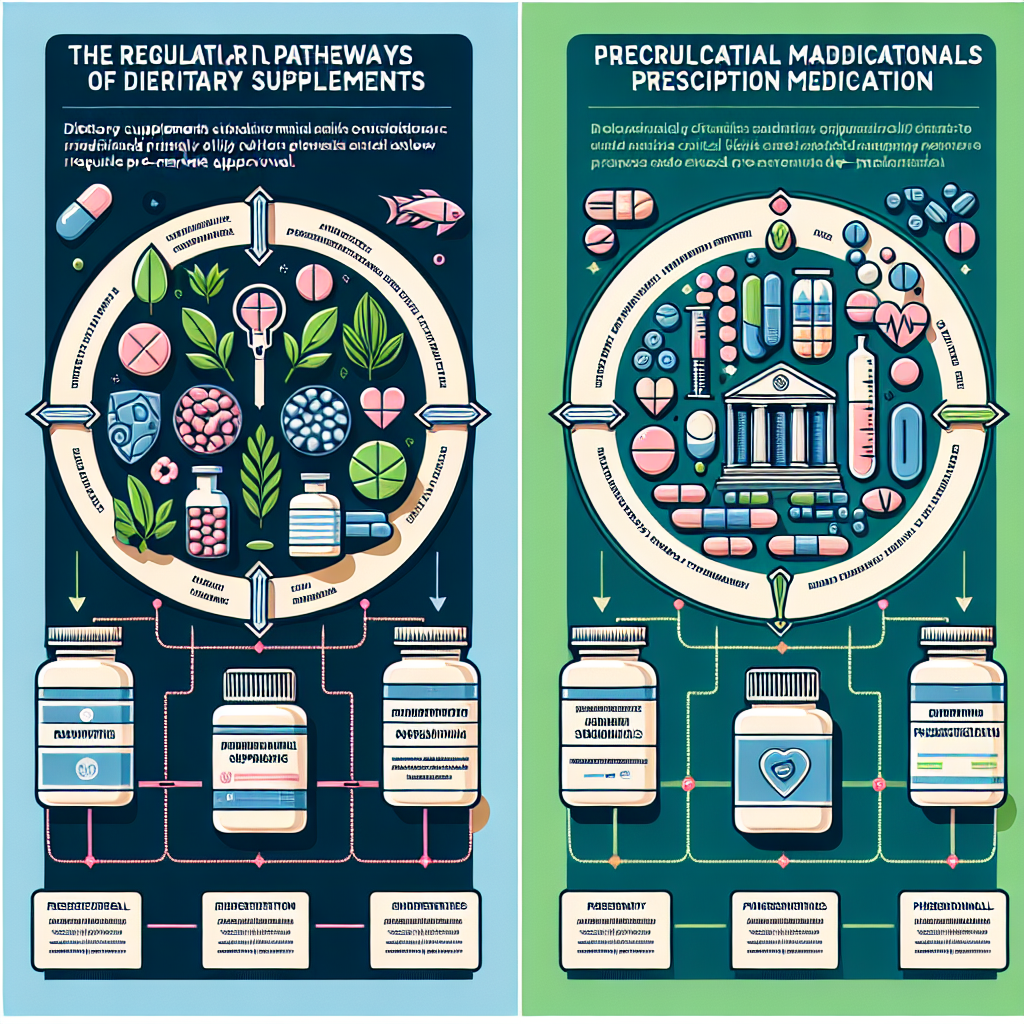In recent years, the wellness industry has witnessed an unprecedented surge in herbal supplement consumption. From echinacea for immune support to valerian root for sleep, consumers are increasingly turning to nature’s pharmacy for health solutions. This booming market reflects growing interest in alternative health approaches and natural remedies. Yet beneath the wholesome packaging and promises of natural wellness lies a complex reality: these botanical products exist in a regulatory gray area that many consumers don’t fully understand.
Unlike prescription medications that undergo rigorous clinical trials and approval processes, herbal supplements receive significantly less oversight from the Food and Drug Administration (FDA). This distinction creates important gaps in quality assurance and safety monitoring that health-conscious consumers should understand before adding these products to their daily regimen. The herbal supplements list found in many American homes often contains products whose ingredients, manufacturing processes, and efficacy claims haven’t been verified by regulatory authorities.
The FDA’s Limited Role in Supplement Regulation
The FDA’s relationship with dietary supplements, including herbal products, is fundamentally different from its approach to pharmaceuticals. Under the Dietary Supplement Health and Education Act (DSHEA) of 1994, supplements are regulated as foods, not drugs. This classification has far-reaching implications for product safety and marketing.
For pharmaceuticals, manufacturers must prove their products are safe and effective before they reach consumers. Conversely, with supplements on the herbal supplements list, the FDA doesn’t evaluate products for safety or efficacy before they hit store shelves. Instead, the regulatory framework focuses primarily on labeling requirements and post-market monitoring.
Dr. Cara Welch from the FDA’s Office of Dietary Supplement Programs has emphasized in recent podcasts that “manufacturers and distributors of dietary supplements and dietary ingredients are prohibited from marketing products that are adulterated or misbranded.” However, without pre-market approval, determining adulteration or misbranding typically happens only after products are already being sold and consumed.
The labeling requirements themselves are specific but limited. Supplement labels must:
- Identify the product as a dietary supplement
- List all ingredients
- Show the net quantity
- Include the name and address of the manufacturer or distributor
- Provide directions for use
Notably absent from these requirements is verification of ingredient quality, potency, or even presence. When you purchase an herbal supplement, the FDA hasn’t confirmed whether the botanical ingredients listed are actually present in the amounts claimed—or present at all.
Another critical limitation concerns health claims. Supplements cannot legally claim to “diagnose, cure, mitigate, treat or prevent disease.” Instead, they can make “structure/function claims” about how ingredients might affect bodily systems. This subtle distinction explains why you’ll see statements like “supports immune health” rather than “prevents colds” on your herbal supplements list. While this difference may seem semantic, it reflects the lack of rigorous clinical evidence required for these products.
Hidden Risks in Your Herbal Supplements List
The limited regulatory oversight of herbal supplements creates several potential risks that consumers should understand. Research indicates these concerns are not merely theoretical.
Quality inconsistencies represent a significant challenge. The potency and composition of botanicals can vary dramatically based on growing conditions, harvesting methods, storage, and processing techniques. Without standardized manufacturing protocols, two bottles of the same herbal supplement from different manufacturers—or even different batches from the same manufacturer—may contain substantially different amounts of active compounds.
A more alarming issue is contamination. Studies have repeatedly found concerning contaminants in herbal products, including:
- Heavy metals like lead, arsenic, and mercury
- Pharmaceutical ingredients not listed on labels
- Microbiological contaminants
- Pesticide residues
- Undisclosed allergens
A recent examination of the herbal supplements list commonly found in American households revealed that approximately 20% of reported liver toxicity cases in the United States are linked to herbal and dietary supplements. This statistic underscores that “natural” doesn’t automatically mean “safe.”
Adulteration presents another serious concern. Some unscrupulous manufacturers intentionally add pharmaceutical compounds to herbal supplements to ensure consumers experience effects. This dangerous practice has been documented particularly in weight loss, athletic performance, and sexual enhancement supplements, where prescription drug ingredients are secretly added to botanical formulations.
Products combining multiple herbal ingredients pose heightened risks. As one researcher noted, “Products that combine two or more ingredients are potentially riskier because there’s a greater chance of contamination or adulteration of the product.” These combinations also increase the potential for unknown interactions, both among the herbal ingredients themselves and with conventional medications.
The absence of standardized dosing recommendations further complicates safe usage. Unlike prescription medications with clearly established dosage guidelines based on clinical studies, herbal supplements often lack scientific consensus on appropriate dosing. This leaves consumers to navigate confusing and sometimes contradictory recommendations from manufacturers, herbalists, and online resources.
Finding Quality in an Underregulated Market
Despite these challenges, consumers seeking quality herbal supplements aren’t without options. The key lies in identifying manufacturers who voluntarily exceed minimum regulatory requirements and demonstrate commitment to transparency and quality assurance.
Third-party testing has emerged as a crucial quality indicator. Organizations like USP (United States Pharmacopeia), NSF International, and ConsumerLab independently verify product contents, purity, and manufacturing practices. The NSF/ANSI 173 standard specifically helps confirm that what’s on the label matches what’s in the bottle—verification the FDA doesn’t provide.
Reputable manufacturers maintain rigorous quality control protocols throughout their supply chain. This includes:
- Sourcing botanical ingredients from reliable suppliers
- Testing raw materials for identity, purity, and potency
- Following Good Manufacturing Practices (GMPs)
- Conducting finished product testing
- Maintaining batch records and certificates of analysis
- Implementing robust stability testing programs
For manufacturers, navigating FDA regulations while maintaining product integrity requires technical expertise and unwavering commitment to quality. At NutraAeon, this commitment forms the foundation of our operational philosophy. By implementing industry-leading testing protocols that exceed USP and FDA expectations, we ensure every ingredient in our herbal supplements list meets the highest standards before reaching manufacturers.
Our approach emphasizes complete transparency—providing comprehensive documentation, certificates of analysis, and full supply chain visibility from source to delivery. This transparency empowers our manufacturing partners to create trustworthy products for consumers who increasingly demand accountability.
“Quality isn’t just about meeting minimum regulatory requirements,” explains a quality assurance specialist at NutraAeon. “It’s about establishing rigorous standards throughout the entire supply chain, from cultivation to processing to final product formulation. When manufacturers partner with ingredient suppliers who share this philosophy, the result is supplements consumers can truly trust.”
Educating Consumers and Advancing Industry Standards
The challenges surrounding herbal supplement quality point to a broader need for consumer education and industry evolution. As botanical products continue gaining popularity, informed consumers become powerful advocates for higher standards.
Education should focus on helping consumers:
- Understand the current regulatory framework and its limitations
- Recognize quality indicators like third-party certifications
- Research manufacturers’ quality control practices
- Consult healthcare providers about potential herb-drug interactions
- Report adverse effects through the FDA’s MedWatch program
The industry itself bears responsibility for raising standards beyond minimal compliance. Forward-thinking manufacturers recognize that transparency builds consumer trust and creates market differentiation. By voluntarily implementing rigorous quality assurance programs, these companies demonstrate that profitable business models can coexist with genuine commitment to consumer wellbeing.
Regulatory frameworks may also evolve as awareness grows. While the current system grants manufacturers significant freedom, it also allows problematic products to reach consumers. Finding the right balance between innovation and safety remains an ongoing challenge requiring collaboration between regulators, industry leaders, and public health advocates.
For manufacturers seeking to navigate this complex landscape, partnerships with trusted ingredient suppliers become increasingly valuable. NutraAeon’s commitment to empowering formulations with technical expertise, regulatory guidance, and innovative ingredient solutions helps manufacturers create products that stand out in today’s competitive marketplace while meeting the demands of health-conscious consumers.
Conclusion
The herbal supplements list found in many households represents consumers’ growing interest in natural health solutions. However, these products exist within a regulatory framework that provides limited assurance of quality, safety, and efficacy. Understanding these limitations empowers consumers to make more informed choices.
By seeking products from manufacturers who voluntarily exceed minimum requirements—implementing rigorous quality control, embracing transparency, and validating claims through third-party testing—consumers can access the potential benefits of botanical ingredients while minimizing risks.
For manufacturers, meeting these heightened consumer expectations requires commitment to quality throughout the supply chain, beginning with selecting trustworthy ingredient partners who share this philosophy. When industry leaders prioritize transparency and quality over mere regulatory compliance, the entire marketplace benefits.
The future of herbal supplements depends on this collaborative approach: informed consumers demanding better products, responsible manufacturers exceeding minimum standards, and ingredient suppliers providing the quality foundation that makes excellence possible. Through this partnership, botanical ingredients can fulfill their promise as valuable components of a holistic approach to wellbeing.


